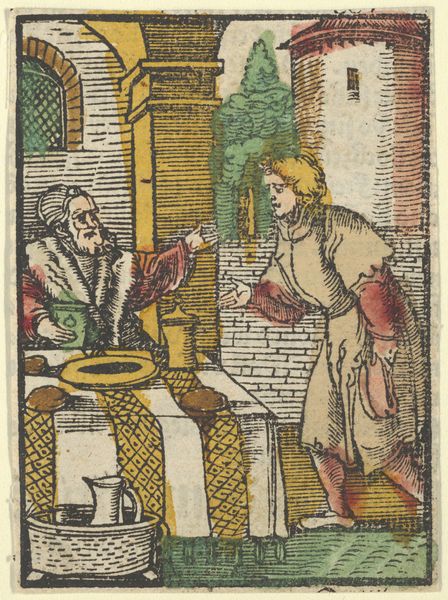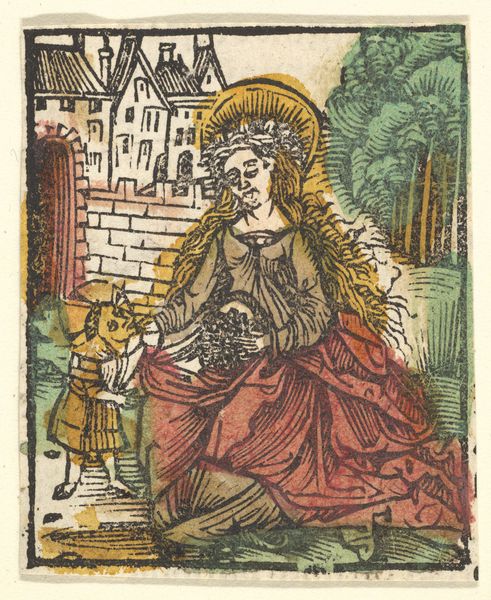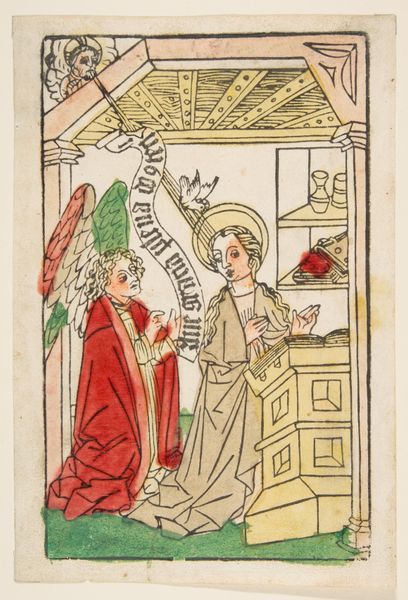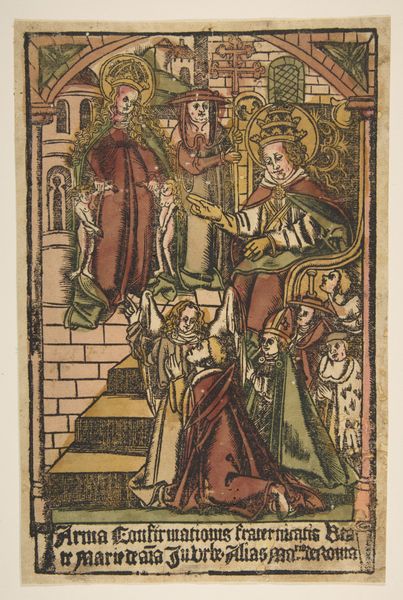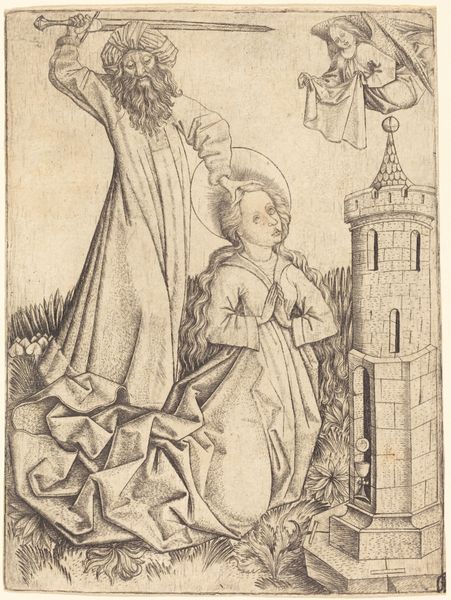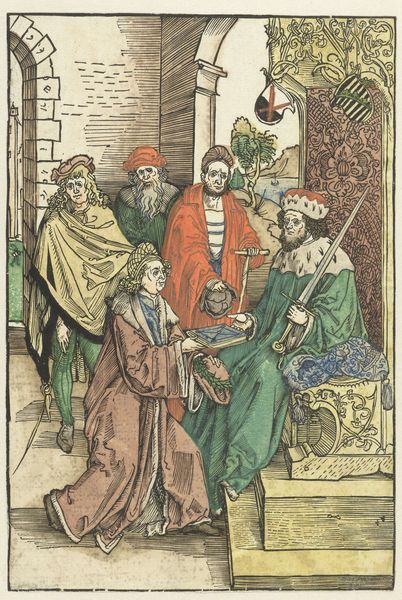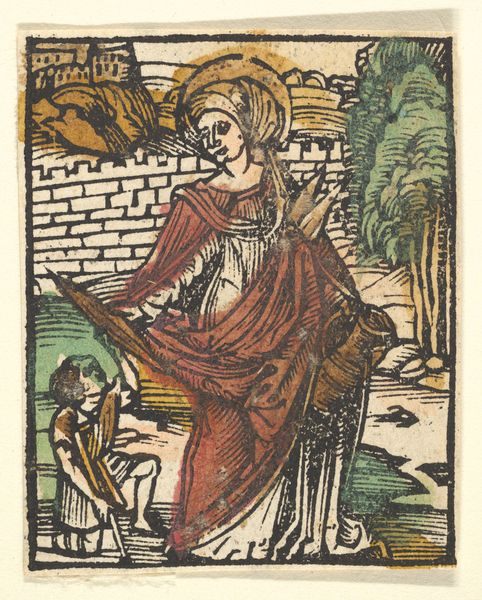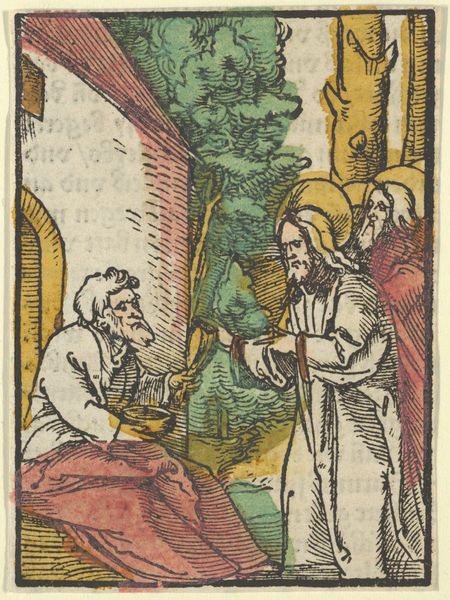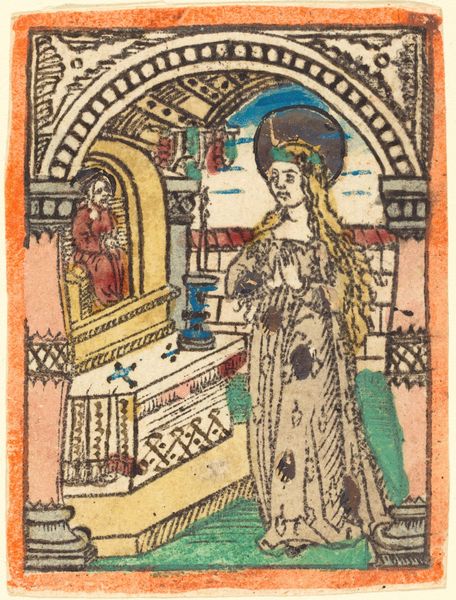
drawing, print, woodcut
#
drawing
#
narrative-art
# print
#
figuration
#
woodcut
#
northern-renaissance
Dimensions: Sheet: 3 3/4 × 2 11/16 in. (9.5 × 6.8 cm)
Copyright: Public Domain
Curator: What a stark image, isn't it? The stark color palette seems fitting for the setting, a narrative print entitled "St. John in Prison, from Das Plenarium." It's a woodcut made in 1517 by Hans Schäufelein. Editor: Indeed. There's something inherently depressing about it, which works well with its historical context, no doubt, yet if we consider how the composition itself creates meaning we are also led down the road of understanding what prison means for marginalized peoples of the 16th century... It raises some profound questions about injustice, then and now. Curator: Absolutely. Schäufelein was operating in the Northern Renaissance, and these prints were often circulated to a broad audience. This particular image illustrates the imprisonment of St. John the Baptist, with a visitor approaching the prison tower to engage with him, but also as he preaches to others there in the confines of his prison cell. Thinking about how it was experienced might lead us to ask—for whom was this work made? Editor: The lines are rather dense for an early 16th century work; Schäufelein emphasizes this somber feeling through strong verticality. The bars, the tower and also the folds of St. John's visitor’s clothing form vertical shapes. They almost overwhelm the human figures, it seems like. It makes us focus more and more on those constraints that mark not only St. John's circumstances but perhaps that of his visitors, as well. Curator: I agree. The very act of confinement also silences the people that St. John addresses and makes invisible their realities in prison. So the work invites us, I think, to explore the themes of persecution, religious freedom, but also, really, what visibility and justice means to marginalized people, then as well as in our times. Editor: I see your point, I'm still really moved by its simplicity in forms. The artist reduces all the lines, and there aren’t so many color combinations that really draw the viewers into St. John's personal state in the moments portrayed here. The lines add to the effect. They really underscore the feeling, I feel. Curator: Understanding these older artworks is always a balancing act. On one hand, you're decoding visual language. But at the same time, we must consider the long and ever continuing road to social justice; and that’s really key, when understanding how it relates to us today. Editor: Right. So whether line, texture, or meaning, there's an undeniable weightiness to consider here.
Comments
No comments
Be the first to comment and join the conversation on the ultimate creative platform.
